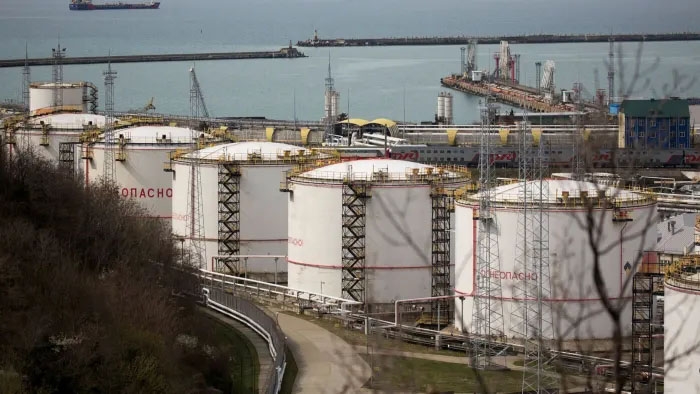
New Nation Report :
Pressure in US Congress is building to ban Russian oil imports into the United States. Last year Russian petroleum products constituted 8% of imports but only 3%of this amount is oil. As such move by US is largely seen as symbolic. However, developments in Europe and Asia by like-minded democracies seem to point to a global effort by oil consuming nations to permanently displace Russian oil exports.
Russia exports around 5 million barrels per day (MBPD) of oil and 3 MBPD barrels of petroleum derivatives. US is actively engaged in discussions with Iran and Venezuela to lift sanctions on oil exports. Both countries produced over 3 MBPD day at their peaks. US shale producers are also scheduled to increase oil production by 1.4 MBPD by end of year. Furthermore, OPEC maintains 4 MBPD of excess capacity to deal with short-term volatility.
The Putin regime has been quite successful in restricting the aforementioned sources from helping drive down escalating out prices. Russia recently has been accused of delaying the Iran Nuclear Deal by placing unrelated demand pertaining exemptions from Ukraine related sanctions.
Shell bought Russian Oil at Record Discount of US $28.50 less than Brent
The co-chair of OPEC Plus is in fact the Russian deputy prime minister, Alexander Novak who has been vocal against any increase in output by the cartel beyond the limited scheduled increments of only 400,00 barrels per day every month.
The former chess champion Gary Kasparov has charged that German politician are deeply ingrained in corruption with Russian oligarchs and state. German Chancellor Olaf Scholz called on former German Chancellor Gerhard Schröder to step down from the boards of Russian state-owned energy companies recently. The German former leader sits atop the supervisory board of Russian state-owned energy giant Rosneft and is slated to take up a position on the Gazprom board.
Most of Russia’s daily oil exports, some five million barrels, go to Europe. The United States consumes about 700,000 barrels per day, or about 4% of the global market.

According to a Bank of America analysts, if most of Russia’s oil exports are halted, a 5 MBPD or larger shortfall could occur, pushing prices as high as $200 per barrel.
Over time however, if oil from Iran and Venezuela enters the market, with a more cooperative OPEC Plus, US can balance the global oil supply/demand equation without Putin’s help.
Already the sanctions placed on Russian banks have had a devastating impact on Russian oil exports which has contributed to the recent jump in oil prices. Buyers are holding back because they, or the shipping companies, banks, and insurance companies they use, are concerned about falling foul of current or future Western sanctions, according to energy experts. Others are concerned that missiles may target shipments, while others simply do not want to be associated with President Vladimir V. Putin’s regime.
In recent days, Russian exporters have been providing the country’s highest-quality oil at a discount of up to $28 a barrel, but analysts say there have been few takers. Buyers, particularly in Europe, have been shifting to Middle Eastern oil.
The Russian ruble continued its slump reaching 124 to the 1 USD despite raising interest rates to 20%. This is a descent from 55 rubles to the dollar. The Russian stock market still remains closed tying up retail investor money. Russian stocks are down more than 80% in international markets. Its bonds have become junk. And to top off all this, Russians are barred from taking forex abroad.
Irrelevant of what happens in Ukraine, it seems the West is determined to remove the dependence on Russian oil and gas. Putin, not only exposed the corruption integral to global energy trade where democracies are financing kleptocracies but also has accelerated the shift towards green energy.

